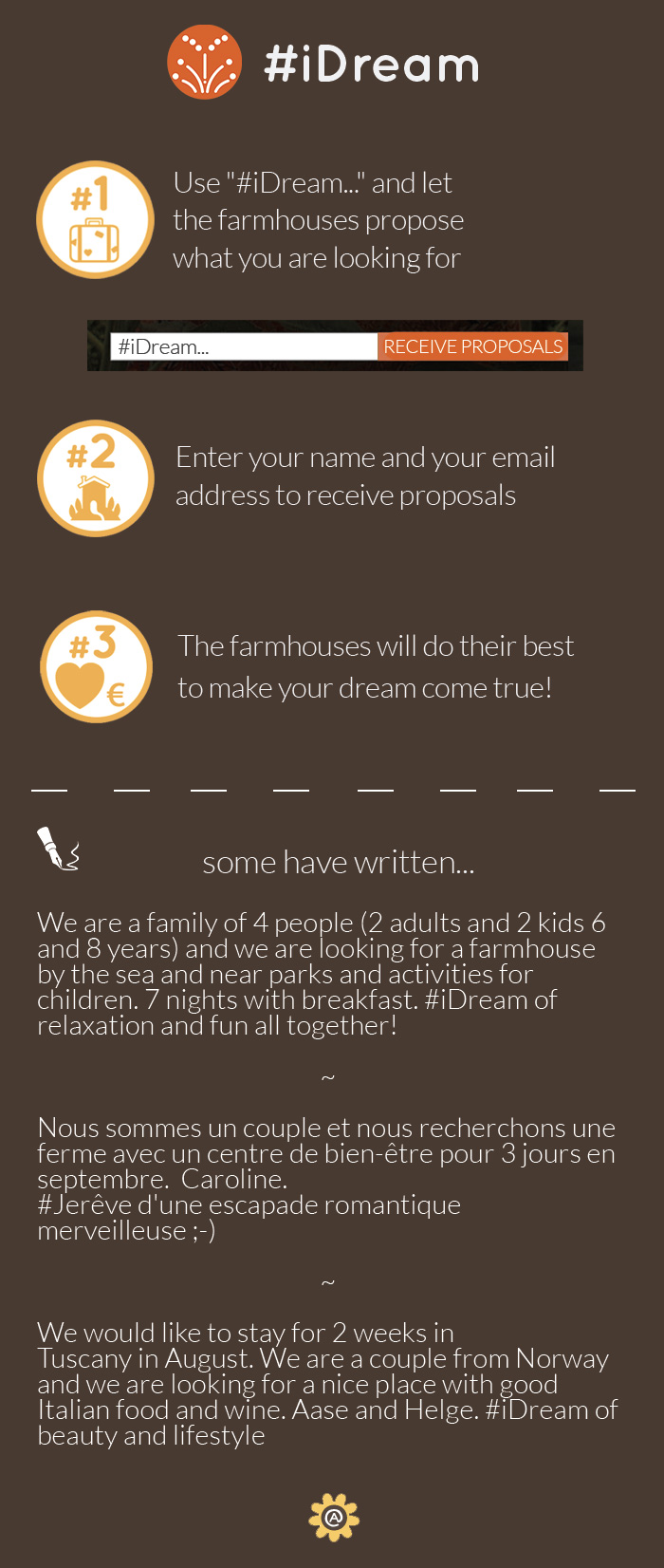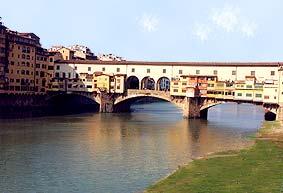


All the structures

Florence stands 50 m. above sea level on the banks of the Arno River, in a hollow surrounded by the first Chianti hills to the south and the Fiesole hills to the north; these hills are green and undulating dotted with small towns and isolated homesteads. A city of art and culture, Florence is the destination of a high proportion of international tourism.
Originally a Roman centre (Florentia), it began to acquire a certain importance under the Carolingians but its fortunes date from the time (1115) of its constitution as a Republic. Torn in the 13th-beginning 14th centuries, by internal strife between the Guelphs and Ghibellines, and later between White Guelphs and Black Guelphs, this did not, however, prevent it, aided by increasing economic importance from undertaking a policy of expansion directed at the largest Tuscan towns. In 1406, once Pisa had fallen, only Siena and Lucca remained free of Florentine rule. Shortly after (1434), the Republic became a Signoria under the Medici family; in 1530 Charles V created the Dukes of Florence, a title which, in 1569, was changed to Grand Dukes of Tuscany as, in the meantime, also the strong Republic of Siena had fallen (1555).
Under this Signoria the town gained great masterpieces by the foremost artists of the time (Brunelleschi, Donatello, Botticelli, Masaccio, etc.) becoming the most important European centre of Renaissance culture. When the Medici family died out, the Lorenas gained power in 1737 and, apart from the Napoleonic period (1800-1815), governed Florence and the region until 1859, the year in which Duke Leopold II was expelled and Tuscany became part of the Kingdom of Italy; it was even the capital city from 1865 to 1870.
The city's urban structure has evolved from the historical cen tre characterized by roads of Roman origin, in successive concentric expansions demarcated by surrounding walls (12th and 14th centuries). Expansion beyond the walls started in the second half of last century, partly the result of building the railway stations, though it rose to considerable proportions in the 1950's owing to the increase in population and the city's economic importance. Today Florence stretches towards Prato to the northeast and Siena to the south.
It is impossible to mention all the countless important monuments and works of artistic attraction, however, limiting the list to the really outstanding, Piazza del Duomo and Piazza della Signoria draw the attention of all tourists. Piazza del Duomo is the site of the principal palaces of religious interest: the Baptistry, a Romanesque building (11th-12th century) perhaps over an older structure, with beautiful bronze doors (14th-15th century by A. Pisano and L. Ghiberti) and mosaics; the Giotto campanile (14th century, 84.7 m high) and the Duomo, in Gothic style (14th-15th century), surmounted by the famous Brunelleschi cupola (15th century), housing works, among others, by Paolo Uccello, Luca della Robbia, Andrea del Castagno, Michelangelo (the Pietà sculpture). In Piazza della Signoria stand the Loggia della Signoria (14th century), decorated with 16th century statues, and Palazzo Vecchio (early 14th century), dominated by the Torre d'Arnolfo (94 m.), with an interesting Renaissance interior. Other monuments include: Palazzo Medici-Riccardi (15th century), Palazzo Pitti (15th century, to a design by Brunelleschi), Palazzo Strozzi (15th - early 16th centuries), Palazzo Rucellai (15th century), Palazzo Davanzati (14th century). Churches include: S. Lorenzo (15th century) with the Sagrestia Vecchia (by Brunelleschi, decorated by Donatello) and the Sagrestia Nuova, housing the Medici family tombs sculpted by Michelangelo, S. Spirito (15th century), S. Maria Novella (Gothic, with façade by L. B. Alberti), Orsanmichele (15th century), Santa Croce (13th century, Gothic), containing the tombs of Michelangelo, Galilei, Alfieri, Machiavelli, Foscolo and other great men, with the adjacent Cappella dei Pazzi, a Brunelleschi creation (15th century); S. Miniato al Monte (Romanesque, with rich interior). Further attractions are the stupendous Italian gardens at Boboli, created in the 16th and 17th centuries, and the inspiring Ponte Vecchio (14th century).
Famous People: Dante Alighieri (poet, 1265-1321), Filippo Brunelleschi (architect, 1377-1446), Benvenuto Cellini (goldsmith, 1500-1571), Francesco Guicciardini (historian, 1483-1540), Andrea del Sarto (artist, 1486-1530), Donato dei Bardi, called `il Donatello' (sculptor, 1386-1466), Lorenzo Ghiberti (sculptor, 1378-1455), Alessandro Filipepi called `il Botticelli' (artist, 1445-1510), Domenico Bigordi called `Ghirlandaio' (artist, 1449-1494), Giovanni Cimabue (artist, 1240-1302), Niccolò Machiavelli (politician and historian, 1489-1527), Antonio Pollaiolo (sculptor, 1432-1498), Filippo Lippi (artist, 1406-1469), Luca della Robbia (sculptor, 1400-1482), Lorenzo the Magnificent (the most famous of the Medicis, 1449-1492).
Cultural Institutions: The University, Il Machiavello Academy, Il Merzocco Academy, Vieusseux Scientific and Literary Cabinet, Spadolini Nuova Antologia Foundation, Uffizi Gallery, the major Italian art gallery with works by, among others, Cimabue, Giotto, Raffaello, Piero della Francesca, G. Bellini and Titian; Museum of the Opera del Duomo (works by Donatello, Luca della Robbia), Palatina Gallery (Rubens, Titian, Tintoretto, Raffaello), Museum of S. Marco (Beato Angelico), Museum of Bargello (sculptures by Michelangelo and Donatello), Museum of the Ancient Florentine House, Gallery of the Accademia (works by Michelangelo), Bardini Museum, Museum of the Opera di S. Croce, Archeological museum.
In the Province: Empoli (agriculture and industry), Fiesole (environmental interest, Romanesque Duomo), Sesto Fiorentino (Doccia China Museum), Castelfiorentino, Certaldo (Palazzo Pretorio museum), Vinci (birthplace of Leonardo, Leonardo Museum), Vicchio (Giotto's home).